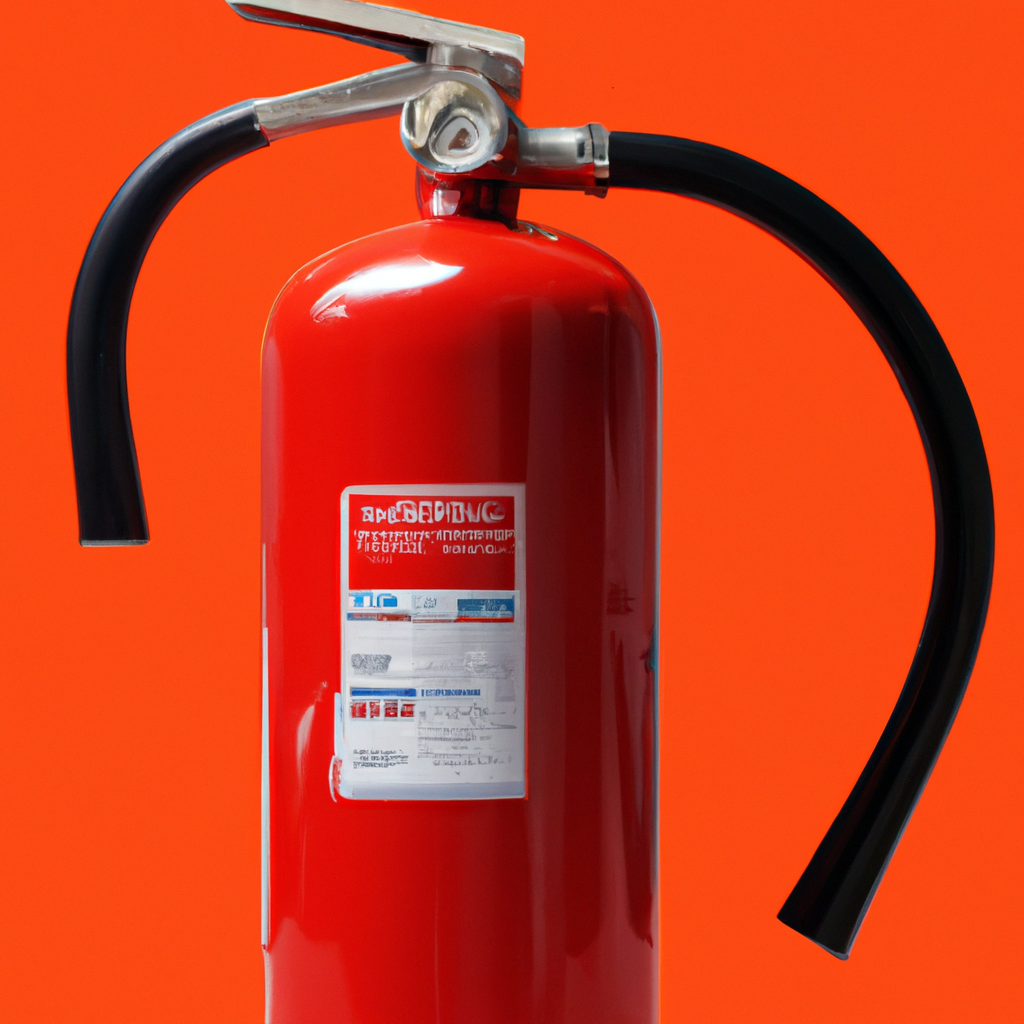In today’s article, we will explore an important safety question: How often should you check a fire extinguisher? We all know the importance of having a functional fire extinguisher at hand in case of emergencies, but many of us may not be aware of the need for regular inspections. With the potential dangers that arise from a faulty or expired fire extinguisher, it is crucial to understand the recommended frequency for checking and maintaining this life-saving device. So, let’s dive in and discover how often you should be ensuring the reliability of your fire extinguisher.
Ways to Ensure Regular Checkup
Visual Inspection
Regular visual inspections are an essential part of maintaining fire extinguishers. By visually examining your fire extinguishers, you can identify any signs of damage or corrosion that may affect their performance. Look for dents, cracks, or leaks, and ensure that the pressure gauge is in the correct range. Additionally, check the condition of the hoses, nozzles, and safety pins to ensure they are in good working order. Performing visual inspections on a regular basis will help catch any potential problems early and ensure that your fire extinguishers are ready to use in case of an emergency.
Weight Check
Checking the weight of your fire extinguishers is another crucial aspect of regular maintenance. Each fire extinguisher has a specific weight range that indicates it is properly charged. By regularly weighing your fire extinguishers, you can ensure that they have not lost any of their extinguishing agent. If you find that a fire extinguisher is below the recommended weight, it should be recharged or replaced immediately to ensure its effectiveness.
Pressure Check
Monitoring the pressure of your fire extinguishers is vital to ensure their functionality. Fire extinguishers contain a pressurized extinguishing agent, and if the pressure falls outside the recommended range, their ability to extinguish fires may be compromised. Use a pressure gauge to check the pressure levels of your fire extinguishers regularly. If you notice any significant changes in pressure, seek professional assistance to have the fire extinguisher serviced or replaced as needed.
Proactive Maintenance Measures
Cleaning and Dusting
Regularly cleaning and dusting your fire extinguishers can help ensure their longevity and reliability. Dust, dirt, and debris can accumulate on the exterior of fire extinguishers, which may affect their overall performance. Use a clean cloth or a soft brush to wipe away any dirt or grime from the surface of the extinguishers. Additionally, remove any cobwebs or foreign objects that may obstruct the nozzle or other vital components.
Checking Expiry Dates
Fire extinguishers typically have an expiration date, after which they may not function properly. It is essential to check the expiry date on each fire extinguisher and replace them accordingly. Keeping track of these dates and replacing expired fire extinguishers will ensure that you have fully functional and reliable equipment at all times.
Replacing Damaged Parts
If you notice any damaged parts on your fire extinguisher, such as a broken hose or a damaged safety pin, it is crucial to replace them promptly. Damaged parts can impact the effectiveness of the extinguisher during an emergency situation. Keep spare parts on hand, and if you are unsure how to replace them, consult a professional technician who can assist you.

Frequency of Inspections
Monthly Inspection
Performing a monthly inspection is an essential part of fire extinguisher maintenance. During this inspection, make sure to visually inspect each extinguisher, check the weight, and verify that the pressure is within the recommended range. By conducting regular monthly inspections, you can identify any potential issues promptly and address them before they become a problem.
Annual Maintenance
In addition to monthly inspections, it is recommended to have your fire extinguisher professionally serviced on an annual basis. Professional technicians can conduct a thorough examination, assess the condition of the extinguisher, and perform necessary maintenance tasks. This includes recharging the extinguisher if necessary, replacing any expired units, and ensuring all components are in optimal condition.
Intensive Servicing
While monthly inspections and annual maintenance are crucial, there are situations where more extensive servicing may be necessary. Intensive servicing is typically performed every few years and involves a comprehensive inspection and maintenance of each fire extinguisher. During this servicing, internal components are examined, and any necessary repairs are made to ensure that the extinguisher is functioning at its best.
Factors Determining Inspection Frequency
Environment and Usage
The environment in which your fire extinguishers are located can impact their performance and longevity. If your fire extinguishers are exposed to harsh conditions, such as extreme temperatures or high humidity, more frequent inspections may be required. Similarly, if the extinguishers are located in areas with high traffic or a higher risk of fires, more frequent inspections may be necessary to ensure they are always ready for use.
Fire Extinguisher Type
Different types of fire extinguishers require different inspection and maintenance frequencies. For example, a water-based extinguisher may require more frequent inspections compared to a dry powder or CO2 extinguisher. Refer to the manufacturer’s guidelines or consult with a fire safety professional to determine the appropriate inspection frequency for each type of fire extinguisher in your facility.
Regulatory Requirements
Regulatory requirements play a significant role in determining the frequency of fire extinguisher inspections. Depending on your jurisdiction and industry, specific regulations may dictate how often your fire extinguishers need to be inspected and serviced. Non-compliance with these regulations can have serious consequences, including fines or potential liability in the event of a fire. Stay up to date with local fire safety codes and ensure that your inspections align with the required frequency.

Signs Indicating Inspection is Required
Visual Damage or Corrosion
Visual signs of damage or corrosion on a fire extinguisher are clear indicators that an inspection is required. Any dents, cracks, or leaks on the body of the extinguisher may compromise its functionality and effectiveness. Additionally, signs of corrosion can indicate internal damage. If you notice any visual damage or corrosion during your regular inspections, consult a professional technician to assess the extent of the damage and take appropriate action.
Expired Inspection Tags
Each fire extinguisher should have an inspection tag that indicates when it was last inspected and when the next inspection is due. If you come across a fire extinguisher with an expired inspection tag, it is crucial to have it inspected as soon as possible. An expired tag implies that the extinguisher may not have been checked within the recommended timeframe, and its condition and functionality cannot be guaranteed without further evaluation.
Low or Zero Pressure
During your pressure checks, if you find that a fire extinguisher has low or zero pressure, it should be dealt with immediately. Low pressure can indicate a leak or another issue with the extinguisher that renders it ineffective. A fire extinguisher with low or zero pressure should be taken out of service, and professional assistance should be sought to determine the cause and perform the necessary repairs or replacements.
Importance of Regular Inspections
Ensuring Fire Extinguisher Functionality
Regular inspections are vital to ensure that your fire extinguishers are in good working order and ready to be used in the event of a fire. By identifying and addressing any maintenance issues promptly, you can increase the chances of successfully extinguishing a fire and minimizing potential damage.
Compliance with Safety Regulations
Maintaining fire extinguishers in proper working condition is not just good practice; it is also a legal requirement in many jurisdictions. By conducting regular inspections and ensuring compliance with safety regulations, you can avoid potential fines and penalties while prioritizing the safety of your employees and property.
Preventing Fire-Related Accidents
Regular inspections can play a crucial role in preventing fire-related accidents. Faulty or improperly maintained fire extinguishers may fail to work when needed the most, potentially leading to devastating consequences. By investing time and effort into regular inspections, you can help mitigate the risk of fire accidents and protect both lives and property.

Training and Certification
Certified Inspectors
When it comes to fire extinguisher inspections, relying on certified professionals is highly recommended. Certified inspectors have the necessary training, knowledge, and experience to perform thorough inspections and provide accurate assessments. Hiring a certified inspector ensures that your fire extinguishers receive the attention they require and that any issues are addressed by qualified personnel.
Employee Training
In addition to professional inspections, it is essential to provide your employees with training on how to properly use fire extinguishers and recognize the signs of a potential fire. Well-trained employees can quickly respond to fire emergencies, effectively use fire extinguishers, and potentially prevent the escalation of a fire. Regular training sessions should be conducted to refresh employees’ knowledge and ensure their readiness in handling fire-related situations.
Record-Keeping
Maintaining comprehensive records of all fire extinguisher inspections is essential for compliance and accountability. Record-keeping should include inspection dates, findings, and actions taken, as well as any employee training sessions conducted. These records can serve as evidence of compliance during safety audits, and they provide a history of maintenance and inspections that can help identify any recurring issues or patterns.
Common Mistakes and Misconceptions
Neglecting Regular Inspections
One of the most common mistakes is neglecting regular fire extinguisher inspections. Without regular checks, issues may go unnoticed, and fire extinguishers may fail when needed. Make it a priority to implement a regular inspection schedule and follow through consistently to ensure the ongoing safety and functionality of your fire extinguishers.
Assuming No Maintenance is Required
Some people mistakenly assume that fire extinguishers are maintenance-free once they are installed. However, regular inspections and maintenance are necessary to keep them in optimal working condition. Avoid this misconception by being aware of the importance of proper upkeep and understanding the potential consequences of neglecting maintenance tasks.
Ignoring Training and Certification
Many organizations overlook the significance of employee training and certification in fire safety. Neglecting to train employees on how to use fire extinguishers properly can lead to inefficient or incorrect fire suppression efforts. Additionally, hiring non-certified inspectors may result in insufficient inspections or inaccurate evaluations. Prioritize both employee training and certification when it comes to fire extinguisher maintenance.

Conclusion
Regular inspections are paramount to ensure the functionality of fire extinguishers and compliance with safety regulations. By implementing visual inspections, weight checks, and pressure checks, you can identify any issues early and address them promptly. Proactive maintenance measures such as cleaning, checking expiry dates, and replacing damaged parts help further enhance the effectiveness of fire extinguishers. The frequency of inspections depends on various factors, including the environment and usage, fire extinguisher type, and regulatory requirements. Signs such as visual damage, expired inspection tags, and low pressure indicate the need for immediate inspection and maintenance. Regular inspections not only ensure fire extinguisher functionality but also help prevent fire-related accidents and comply with safety regulations. Training and certification of both inspectors and employees are crucial components of a comprehensive fire safety program. By avoiding common mistakes and misconceptions and prioritizing regular inspections and maintenance, you can significantly enhance fire safety and protect lives and property.
